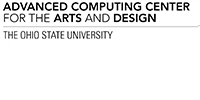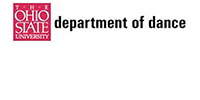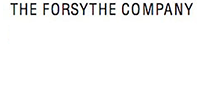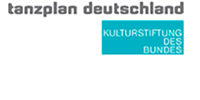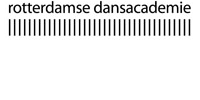Published online in 2009, the interactive artwork-Synchronous Objects for One Flat Thing, reproduced—re-imagines the expressive possibilities of information in dance. Created by William Forsythe, Maria Palazzi, and Norah Zuniga Shaw with more than 30 contributing researchers at the Advanced Computing Center for the Arts and Design and The Forsythe Company, the project flows from dance, to data, to objects. The dance is One Flat Thing, reproduced (2000) by William Forsythe. The data are translations of choreographic structures in the dance. The objects are visualizations, animations, and interactive software repurposing the choreographic information in the dance through the data. From the beginning, the project aimed to appeal to a broad public from diverse fields including but not limited to dance. Forsythe explains, “The project starts from the recognition that choreography is an organizational practice that employs fundamental creative strategies relevant to many other domains.”
Synchronous Objects has attracted millions of unique visitors online as well as hundreds of thousands of repeat users from over 90 countries. Winning numerous awards and touring internationally for over a decade, the project is featured in publications, curated exhibitions, and events across North America, Europe, and Asia most often serving as an educational resource for interdisciplinary research and creativity in diverse disciplines from dance to design, media arts, statistics, geography, architecture, and beyond. Called "wildly creative" by the New York Times, the project's generation of data from the dance and use of interactive animation to visualize deep choreographic structures shifted the paradigm from documentation and preservation to one of interdisciplinary knowledge exchange and new expression.Explore a list of selected resources about Synchronous Objects.
Presented here in a new format, this site provides a partial document of the original and is offered as a resource for the many users still seeking to view and share the work. In this site you can access videos from the original 20 objects, interface documentation, and summary videos we created for gallery exhibitions and presentations. Explanatory text and process notes are included. After ten years online with thousands of ongoing users, the work became inaccessible December 31st, 2021 with the final demise of Flash (the software used to create the interactive interface). The interactive tools are no longer supported given changes in online security protocols. Our experience points to the ongoing problem of market driven obsolescence of necessary software and file formats for artistic and scholarly digital projects.Sign up here to receive updates and follow us on Instagram.
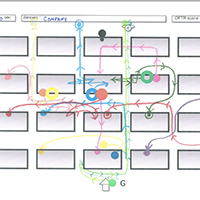
Though Forsythe’s One Flat Thing, reproduced piece holds vast stores of information in its concrete patterns and temporal design, it is also a “choreographic resource,” a phenomenon that can be interpreted more expansively in relation to contemporary concerns in information aesthetics, philosophy, architecture, computer science and other fields. The use of One Flat Thing, reproduced as a research resource is not about repertory or reconstruction. It’s about representing the complex choreographic structures created by Forsythe in ways that generate new creativity and address his provocative question, "what else might physical thinking look like?".

This process of transformation from a dance to a choreographic object requires cross-disciplinary collaboration, and in our community at ACCAD we have found that thinking in this way makes space for new connections between art and science, practice and theory. Animation is the core expressive technique that articulates Forsythe’s choreographic intention to the viewer. Artists and scientists working collaboratively on this project use animation techniques such as traditional keyframing, algorithmic and generative approaches to create animation and interactive experiences that reveal Forsythe’s strategies and re-imagine what this dance can look like. These animated manifestations (traces, scores, maps) visualize information in new ways, as an evolving viable research space and as a departure point for conversation and further discussion.
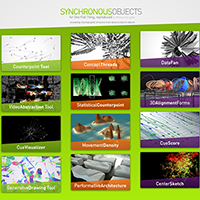
Flowing from dance to data to objects. The dance is One Flat Thing, reproduced (2000) by William Forsythe. The data are translations of choreographic structures in the dance. The objects are visualizations, animations, and interactive software repurposing the choreographic information in the dance through the data.
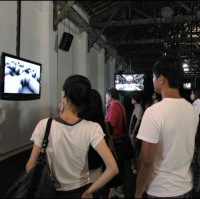
Synchronous Objects has received over a million unique visitors and hundreds of thousands of repeat users. The project also tours internationally as video installations, workshops, and public lectures. This online screen-based work continues to be used by thousands each year who are interested in data visualization, choreographic thinking, the body in digital culture, design, philosophy, interdisciplinary collaboration, and the work of William Forsythe.
Ohio State Graduate Research Associates: Beth Albright, Design | Michael Andereck, Computer Science and Engineering | Sucheta Bhatawadekar, Design | Hyowon Ban, Geography | Andrew Calhoun, Architecture | Jane Drozd, Design | Joshua Fry, Design | Melissa Quintanilha, Design | Anna Reed, Dance | Benjamin Schroeder, Computer Science | Lily Skove, Dance | Ashley Thorndike, Dance | Mary Twohig, Design
Ohio State Faculty Researchers: Ola Ahlqvist, Department of Geography | Peter Chan, Department of Design | Noel Cressie, Department of Statistics | Stephen Turk, Austin E. Knowlton School of Architecture.
Forsythe Company Dance Research Collaborators: Jill Johnson, choreographer/teacher/performer/Forsythe stager | Prue Lang, choreographer | Amy Raymond,choreographer/teacher | Christopher Roman, dancer/choreographer/ballet master | Elizabeth Waterhouse, dancer/researcher
Produced by: The Forsythe Company | Advanced Computing Center for the Arts and Design and Department of Dance at The Ohio State University.
Acknowledgements: In addition to the project and team and our research collaborators, we would like to thank the many interdisciplinary student collaborators who have brought their thinking and creativity to the early stages of the research in courses, consortiums, workshops, and short-term assistantships. They include: Ohio State students Matthew Bain (Design/Music), Francie Buschur (Design), JulieAnna Facelli (Dance), Steven Gutierrez (Art), Iuri Lioi (Design), Tim Jacoby (Design), Fran Kalal (Design), Neelima Karanam (Computer Science Engineering), Scott Kittle (Architecture), Bernice Lee (Dance), Sara Mitchell (Dance), Noelle Stiles (Dance), Cheng Zhang (Computer Science Engineering); Tanzplan Deutschland students in attendance at the Tanzplan Biennale 2007; and Rotterdamse Dansacademie students 2007–08.Thanks also to faculty and staff from The Ohio State University for early prototype feedback and other support including Marc Ainger (Music), Melanie Bales (Dance), Marie Cieri (Geography), James Davis (Computer Science Engineering), Candace Feck (Dance), Susan Hadley (Dance), David Huron (Music), Richard Jagacinski (Psychology), Brian Rotman (Comparative Studies), Brian Stone (Design), James Todd (Psychology), and Valerie Williams (Dance); to Jason Housh of Marketing Communications; to ACCAD faculty and staff David Bertram, Alan Price, Elaine Smith, and Brian Windsor; to Scott Marsh (Dance) for his early backing of the project; to College of the Arts Communications: Eva Dujardin Dale, Victoria Ellwood, and Pat Riechel; and to Ann Bremner and Ryan Shafer for patient and skillful editing.Thanks are due to Dorsey Bushnell, Dr. Vera Battis-Reese, Mechthild Ruehl, Julian Gabriel Richter and the entire Forsythe Company staff for their support; to Rebecca Groves for her collaboration and early inspiration; to Prue Lang and Amy Raymond for their vision and feedback; and to the following Forsythe Company dancers for contributing their oral histories of One Flat Thing, reproduced: Yoko Ando, Cyril Baldy, Francesca Caroti, Dana Caspersen, Amancio Gonzalez, Thierry Guiderdoni, Marthe Krummenacher, Prue Lang, Ioannis Mantafounis, Fabrice Mazliah, Roberta Mosca, George Reischl, Jone San Martin, Ander Zabala.Special thanks to the Chair of Ohio State’s Department of Dance, Susan Petry; Ohio State Associate Vice President, The Arts Initiative, Karen A. Bell; and to The Ohio State University President, Dr. E. Gordon Gee.
